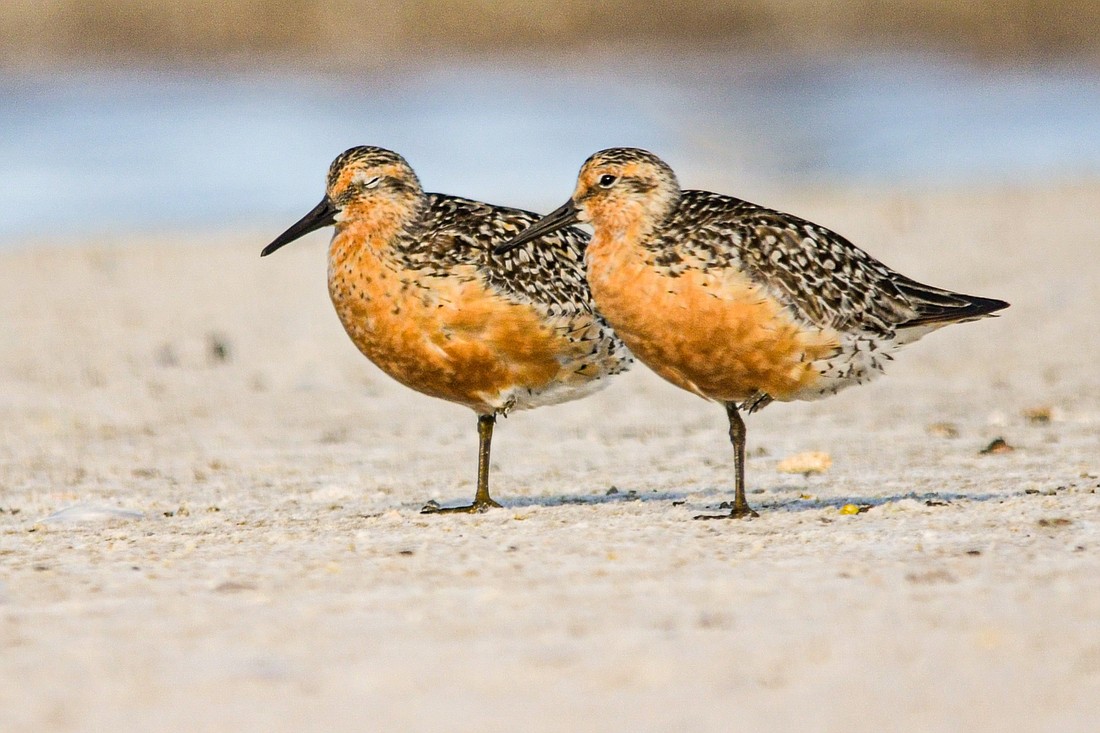- July 9, 2025
-
-
Loading

Loading

Our beautiful beaches are now crowded with visitors from places far away. But few have traveled as far as rufa red knots. On 20-inch wingspans, they fly more than 9,300 miles, not once but twice a year, making them the longest-distance migrants in the animal kingdom. In the fall, they travel between their nesting grounds in the Canadian Arctic and their southern wintering grounds, repeating the trip in reverse in the spring. One rufa red knot, banded in 1995 in Tierra del Fuego, off the southern tip of South America, was nicknamed “Moonbird”, because in his lifetime, he had flown more than 325,000 miles; the distance to the moon and nearly halfway back.
Migrating birds' journeys are exhausting, and require two to three stopovers. If the birds don’t consume enough food during these stops, or unnecessarily expend energy, they may not have enough fuel to complete their trip. Undernourished knots that manage to make it to the Arctic will arrive in weak and in poor shape for breeding.
When last spotted in 2015, “Moonbird” was at least 22 years old. Sadly, in his lifetime, 80 percent of the rufa red knot population had disappeared. They are now listed as a federally threatened species, due to habitat loss and degradation and over-harvest of horseshoe crabs, whose eggs are a critical food source for knots on their migration route north to the Arctic.
To help red knots, and all other migratory birds using our shores for “pit stops,” we can reduce disturbances by keeping pets off the beach. And, by walking around, rather than flushing birds, we can let them get the rest they need.
Save our Seabirds is a non-profit organization whose mission is to rescue and rehabilitate sick and injured birds, releasing as many as they can, while educating our community about avoiding injuries and preserving habitats.